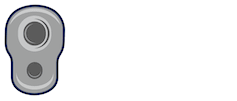No matter what type of shooting you're doing and no matter the range, you will want the rear sight as close as possible to your eye... that is just how an aperture sight works the best, the fastest, and with the most precision. I see a lot of people who are new to the AR try to mount the rear sight too far forward. You should always mount your rear sight on the rear-most rail slot. The rear sight should just be a blur that you are barely conscious of, if at all, while your eye is focused on the front sight once you have lined the sights up on the target. Of course you need to center the front post in the aperture, but after a little practice you will find yourself doing this naturally. This is a combination of muscle memory, and the eye naturally seeking the greatest point of light (the middle of the aperture). However it is good to check yourself every so often during practice and make sure you are still doing it. You should "turkey neck" forward to get nice and close to the rear sight... nose to charging handle is a great way to do this consistently. Think of the rear sight as a window... if you want to get the best view out of a window, you get close to it. Your eye will catch more of the light that is coming through the aperture, and you will get your sight picture a lot quicker since you aren't worrying about trying to line the front up with the rear. That is the chief advantage of aperture sights over notch sights.
Sight radius is a good thing... it makes it easier to be more precise. The front sight should be as close to the muzzle as you can get it, and should be mounted to the barrel, rather than the handguard, for best consistency and precision (since the handguard can move relative to the barrel, especially if resting the rifle on the handguard or with sling pressure on it). It is also best NOT to have a sling attached to your front sight base, as with the factory AR setup, for the same reason. If your irons are purely backup and/or close quarters sights, like with offset sights, these last few things aren't as important of a consideration... but the IDEAL iron sight setup is as long of a sight radius as the rifle design allows, with both the front and rear sights mounted to the barreled action, and with the sling attached to the handguard rather than the barrel or FSB (and preferably a free-floated handguard).
As for what size aperture to use, I like to just use them the way the military intended for them to be used... the big one for point blank out past 200m, and the small one for 300 on out. The large aperture is 2 MOA lower than the small one, which means that if you have a 300m zero on the small one, the big one gives you a 50/200m zero... which is perfect for the closer range targets since it is within a couple inches of POI from a few feet out to 220m or so. Flip to the small aperture for longer shots, and dial your come-ups on the BDC wheel if necessary. For situations where I don't have time to make come-ups, I just remember that at 400m I aim for the head to get a hit on center mass, and at 500m I aim a torso and a half above center mass to get a hit.
All the above advice on close-quarters use of the irons is excellent.
And if you want some great instruction and practice on applying the fundamentals with iron sights for precision shooting, go to an Appleseed. Then go to a good carbine course to learn how to apply them up close and fast.
Hope this helps!







